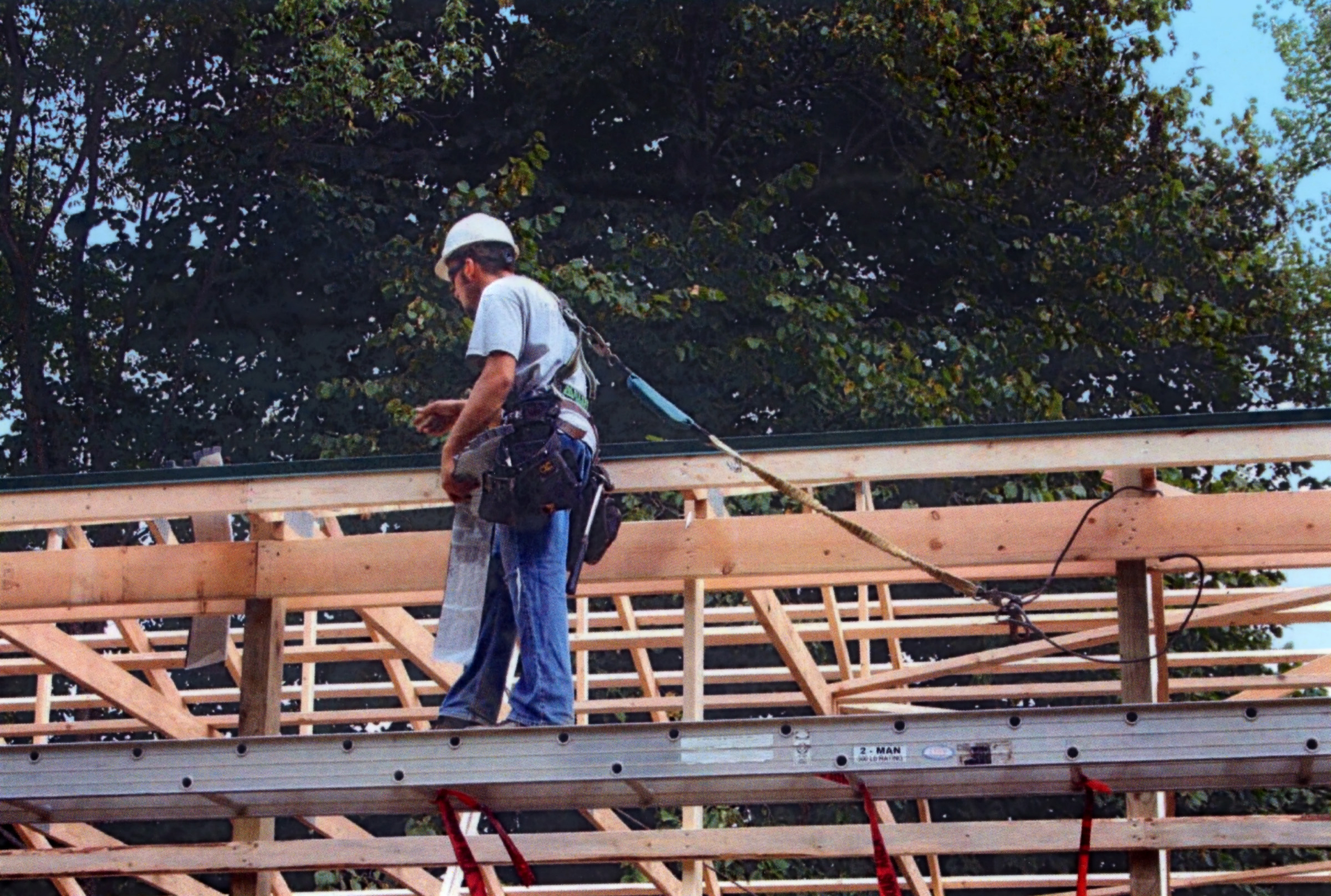Virginia Tech professors awarded grant to improve residential construction safety

Two Virginia Tech professors have been awarded a research grant from the National Institute for Occupational Safety and Health that will help reduce injuries and save lives among residential construction workers by addressing jobsite fall prevention.
Jobsite falls occur more often in residential construction compared with other construction sectors, where small crews, short schedules, and the variety of tasks to complete create a difficult working environment.
Daniel Hindman, associate professor in the Department of Wood Science and Forest Products in the College of Natural Resources and Environment, and Tonya Smith-Jackson, associate professor in the Grado Department of Industrial and Systems Engineering in the College of Engineering, will use the $825,464 grant to fund a four-year project to develop and evaluate a new Fall Arrest System (FAS) for residential housing construction. The project is based in Virginia Tech’s Occupational Safety and Health Research Center, of which Smith-Jackson serves as associate director.
The project will adapt an existing Fall Arrest System — a set of equipment, typically including a safety harness, lanyard, and anchorage system, used to prevent construction workers from falling while they perform their daily tasks — from post frame construction and redesign it for second story work. The researchers will analyze the system’s usability in actual construction situations as well as collect valuable information on the needs and attitudes of workers.
“This grant provides insight into the challenges of residential construction safety and addresses the need for fall protection,” stated Hindman.
Hindman’s expertise in structural housing systems and fall prevention combined with Smith-Jackson’s expertise in safety climate assessment and system usability will address some of the most challenging issues related to Fall Arrest Systems. Ease of use, worker attitudes and perceptions, and the loss of construction time by using safety equipment are among the top concerns.
“Our work benefits from synergies between engineering, wood science, and psychology,” commented Smith-Jackson. “We are able to address the Fall Arrest System as a real sociotechnical system that is influenced by the physical design and usability of the system, as well as company management, organizational and cultural factors, and workers’ attitudes.”




